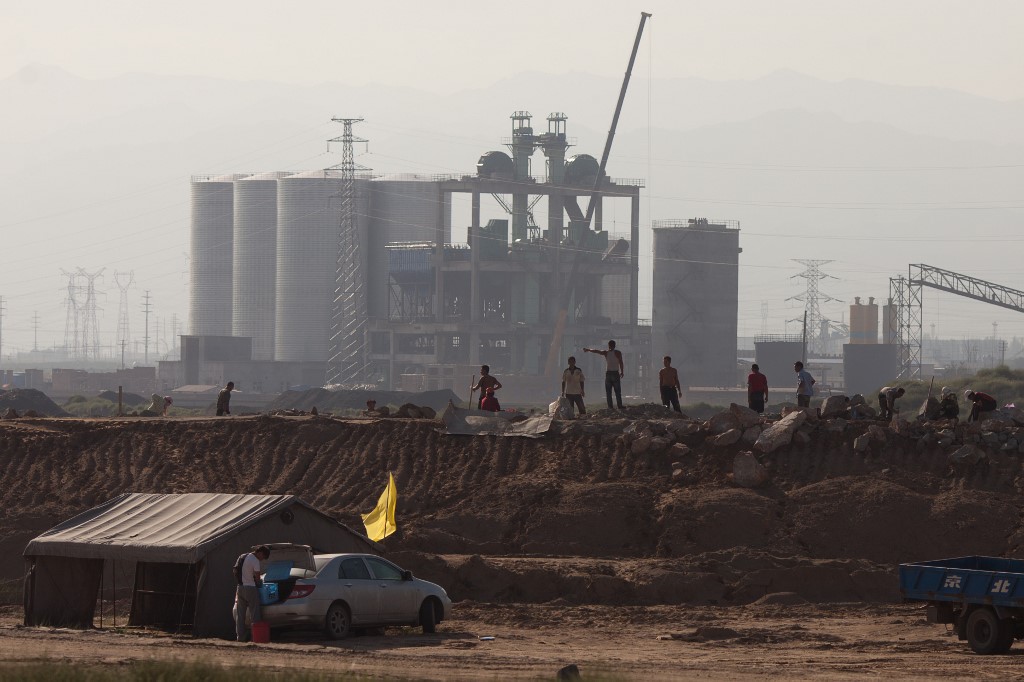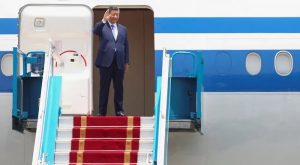(ATF) At the beginning of China’s 14th five-year plan, on January 15, the Ministry of Industry and Information Technology of the Chinese government published the “Rare Earth Management Regulations (Draft for Comments)”.
Xinhua said it signalled the development of a more regulated, high-quality rare earth industry. The draft seeks to manage the value chain from mining to export. It also highlighted the prohibition of trading illegally produced products, a move aimed at protecting industrial security and the environment.
In the past two weeks, other news has also revealed a coherent plan on expanding and upgrading the industry by increasing the added-value of products by optimising processes to lower environmental impacts and energy requirements, and by utilising the current supply chain.
This includes increasing raw material imports and building stronger connections between companies throughout the supply chain. The latter will also be complemented by establishing IT-sharing platforms as well as developing and promoting downstream applications. These comments are not entirely new.
Digging Dirt
Ever since Chinese President Xi Jinping stood in Inner Mongolia in 2014 and expanded on the importance of Baotou to depart from “digging dirt and selling dirt”, China’s rare earth industry has been preparing for such a transition.
Bastnaesite and the ion-adsorption clay are the two primary rare earth sources in China. Bastnaesite is the major source for light rare earth. Nd and Pr, the most valuable light rare earth, can be used to make permanent magnets for EVs and aircrafts, wind turbines, catalytic converters – applications crucial for future e-mobility and renewable energy transitions.
The largest bastnaesite mine in the world is Bayan Obo in Inner Mongolia. It is being developed by China Northern Rare Earth Group (CNREG), one of the “largest six” Chinese rare earth groups. Rare earth extraction from bastnaesite traditionally involves using large quantities of concentrated sulphuric acid. The major environmental problems associated with bastnaesite activities are fluorine pollution, tailings with high radioactive Th content, and acidic water. Throughout 2010-2015, there was an undeviating effort to shut down small plants that did not meet environmental and production standards.
This month, CNREG CEO Dianqing Zhao pointed out that the only way to meet future environmental standards is to upgrade technology by placing R&D as the highest priority; the company must focus on solving environmental challenges targeting sulphur removal, VOCs exhaust treatment, and toxic discharge reduction.
Operational challenges and potential downstream applications should guide R&D, he said. Attracting and retaining talent, increasing research spending and building connections with research institutions are key to successfully commercialising R&D discoveries.
In Baotou alone, there are more than 400 rare earth researchers, including a state-of-the-art national laboratory. Such research capacity has already provided China with leading experts in commercial-scale rare earth extraction and separation. These will guide the development of greener processes for conventional resources.
Between January and August last year, China exported 24,377 tonnes of rare earths, a 25.7% year-over-year reduction. According to a spokesperson with China’s commerce ministry, such a reduction was caused by decreased demand from end-users during the pandemic.
Selling dirt
Other analysts also pointed out that the tight domestic supply of ion-adsorption clay is another reason behind the decline. In early 2020, the overall annual REE mining quota was reduced to 66,000 tonnes, dropping 50%.
The quota for rare earth from ion-adsorption clay was approximately 15%, which showed a consistent decrease compared to 17% in 2015 and 30% in the early 2000s.
Ion-adsorption clay is the main source of mid and heavy rare earths. Rare earth elements exist on the clay surface as ions and can be easily “washed” off with ammonia phosphate without mining.
This technology is called in-situ leaching, an inexpensive and effective method. Although it is relatively “greener” than the technology used in the 1980s, surface water near the production sites was found to contain ammonia at 300 times the permitted level. Near the exhausted sites from the 1980s, surface water still contains ammonia at concentrations 20 times higher. In 2012, it was reported that there were 302 abandoned sites in Ganzhou, Jiangxi, with more than 1.9 million tonnes of tailings and more than 24,053 acres of land destroyed. It will take approximately 70 years for tailing clean-up and land remediation.
In the 2015 Jiangxi Province Annual Report, Ganzhou EPA estimated around it would require 309 million dollars to remediate the abandoned sites and tailings, and an additional 150 million dollars to rehabilitate the ecosystem.
Cleaner transition
Northerners are not the only people who want to transition to cleaner processes. It is also in the best interests of local government and developers, such as China Minmetals, to depart from the old “digging dirt and selling dirt”.
Since 2017, Ganzhou has developed a technology using microbes to decompose excess ammonia in wastewater. At seven water treatment plants, the ammonia content in water was reduced by more than 90%.
In 2020, the testing sites were able to meet surface water standards. At the end of 2020, a $7.5 million project was initiated to develop intergraded solutions to process ion-adsorption clays and rehabilitate the ecosystem, led by China Minmetals and several research institutes.
Increasing imported ion-adsorption clays became a pivotal part of maintaining the current mid and heavy rare earth supply chain dominance. China has also been relying on imports from ASEAN countries since 2018, especially from Myanmar. In 2018 and 2019, imports from the country were equivalent to 45%-60% of the total mid and heavy rare earth quota.
However, many mining sites are located in regions with high geopolitical risks. Imports have been interrupted from time to time, including lat year due to the coronavirus pandemic.
At the end of 2020, the price for TbO, a key heavy REE, reached a nine-year high. On January 13, the price increased to $1,244 per kg, an 11% increase since the of 2020. Such a dramatic increase in heavy REE could be partially attributed to an increase in end-uses, including rising EV sales. The volatile imports from Myanmar and the reduction of mining activities in Ganzhou also directly contribute to that.
Supply chains
Shenghe, another major player in southern China, is also determined to strengthen supply-chain security by increasing imports. Its partner Mountain Pass is the largest rare earth-producing mine in the US and the second-largest in the world.
More than 30,000 tonnes REO equivalent of bastnaesite concentrate was imported in 2020 alone. Together with their bastnaesite production in Sichuan, Shenghe became the second-largest owner of REE resources in China. Shenghe also saw a 9.45% interest in the Kvanefjeld project in Greenland.
The rare earth elements occur from Kvanefjeld mostly comprise non-conventional and lesser-known rare earth-bearing mineral called steenstrupine. In early 2019, a Chinese pilot-scale lab developed a process producing a 22% REO concentrate with more than 80% recovery, more economically feasible compared with the 14% REO concentrate from earlier studies elsewhere.
Shenghe’s ability to establish secured imports from outside China and deliver technical solutions to both conventional and new rare earth resources is setting up models for other Chinese companies to follow.
China’s ambition to secure rare earth sources is captured in the increasing import of monazite as well. Monazite is a type of phosphate that contains thorium and rare earth. It is categorised as thorium ore/sand both in the US and China.
The technology to extract thorium and rare earth from monazite was developed in the 1950s by Battelle for the nuclear industry. Mining monazite as the solely targeted mineral is currently in China. However, it remains popular as a byproduct. In 2019, Shenghe alone separated 10,000 tonnes of monazite as byproduct from 400,000 tonnes of zirconium-titanium sand.
Meanwhile, China is the largest monazite importer in the world with shipments coming from Malaysia, Thailand, Vietnam, Nigeria, Brazil, Madagascar and Australia. From 2018 to 2020, the total annual monazite import doubled. Madagascar continued to be the largest contributor, providing more than 50% of the supply.
China’s effort to upgrade the rare earth supply chain has been coherent and persistent. The 14th Five-Year plan will rely more on diversified imports to protect supply-chain security and to meet increasing demands for end-uses, especially in the EV industry. R&D will continue to be at the centre to develop and optimise greener processes, remediate exhaust mines, repair the environmental damage, and create more added-value intermediate and end products. Inevitably, China’s “digging dirt and selling dirt” era is coming to an end.
- Xiaojing Yang is a Ph.D candidate in Mining Engineering and a research assistant at Penn State University
























